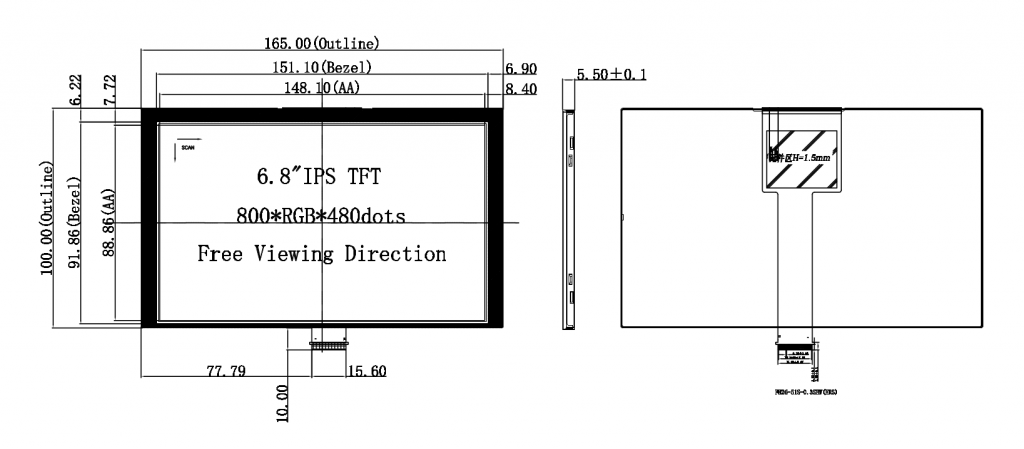The screen has some special commands which can be used to control its brightness and flip the screen, but because the command is not compatible for all type of screen, so test it before use it. Here is a reference for use such command.
For fbusb driver, we have a file named command in /sys folder, we can use it to send the command.
# turn off backlight
echo -e '\x00\x51\x02\x00\x00\x00\x00\x00' > `find /sys/devices/platform/ -name command`
# set backlight brightness to max
echo -e '\x00\x51\x02\x00\x00\x00\xff\x00' > `find /sys/devices/platform/ -name command`
# set backlight brightness to 128(half)
echo -e '\x00\x51\x02\x00\x00\x00\x80\x00' > `find /sys/devices/platform/ -name command`Here is an example of libusb.
#include <stdio.h>
#include <stdlib.h>
#include <memory.h>
#include <libusb-1.0/libusb.h>
static libusb_context *context = NULL;
static libusb_device_handle *handle = NULL;
unsigned char cmd_rotate[] = {0x00, 0x36, 0x02, 0x00, 0x00, 0x00, 0x00, 0x00};
unsigned char cmd_backlight[] = {0x00, 0x51, 0x02, 0x00, 0x00, 0x00, 0x00, 0x00};
int main(int argc, char *argv[])
{
if (argc != 3) {
printf("usage: send_cmd [cmd: m|b] [param]\n");
printf("example: mirror by axis x,y [0,1,2,3]\n\tsend_cmd m 1\n");
printf("example: set backlight [0~255]\n\tsend_cmd b 120\n");
return 0;
}
libusb_init(&context);
handle = libusb_open_device_with_vid_pid(context, 0xc872, 0x1004);
if (handle == NULL) {
printf("no device.\n");
return -1;
}
libusb_claim_interface(handle, 0);
libusb_set_interface_alt_setting(handle, 0, 0);
switch (argv[1][0]) {
case 'm':
cmd_rotate[6] = atoi(argv[2]);
libusb_control_transfer(handle, 0x40, 0xb0, 0, 0, cmd_rotate, 8, 100);
break;
case 'b':
cmd_backlight[6] = atoi(argv[2]);
libusb_control_transfer(handle, 0x40, 0xb0, 0, 0, cmd_backlight, 8, 100);
break;
default:
printf("command is not supported.");
break;
}
libusb_release_interface(handle, 0);
libusb_close(handle);
libusb_exit(context);
return 0;
}
Also please check https://vocore.io/screen.html, the v2scrctl source code for libusb.
